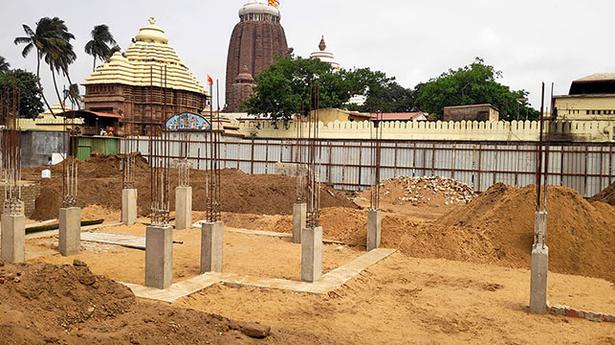
SC reserves order on plea against ‘illegal constructions’ near Puri temple
The Hindu
Petitioner claims ‘desecration and downright destruction of archaeological remains of the heritage site’
The Supreme Court on Thursday reserved its order on a petition challenging “the unauthorised and illegal constructions” conducted by the Odisha authorities adjacent to the famous 12th century Puri Jagannath temple as part of the ₹800-crore Shree Mandira Parikrama project.
The project is presented as a redevelopment exercise. It is reportedly the biggest the temple has seen in centuries and involves a 75-metre corridor around the Meghanada Prachira, the outer wall of the Shree Jagannath temple.
However, a Vacation Bench of Justices B.R. Gavai and Hima Kohli heard Ardhendu Kumar Das, represented by senior advocate Mahalakshmi Pavani and advocate Tomy Chacko, who contended that the “illegal construction” undertaken by the State authorities in the “prohibited area” has resulted in “desecration and downright destruction of the archaeological remains of the heritage site in contravention to the constitutional mandate of Article 49 (protection of monuments and places and objects of national importance) and the provisions of the Ancient Monuments and Archaeological Sites and Remains Act.
Ms. Pavani said there was a complete embargo on construction in the prohibited area. The senior advocate said the illegal constructions were being built under the guise of the “unsanctioned” Shree Mandira Parikrama project conducted by the Odisha Bridge and Construction Corporation.
She submitted that the application for permission for the works was made to the National Monuments Authority.
“The competent authority for all new constructions in the prohibited area of the monument is Director-General, Archaeological Survey of India,” she argued from the petition.
Ms. Pavani said a site inspection in 2021 had observed that there was a “fabrication” of several unsanctioned and unauthorised structures in the prohibited areas of the temple, including tourist shed, kiosk desk which have not been included in the project proposal of the temple management and administrators. No ground penetrating radar survey was done to check the sub-soil for objects of historical or archaeological interest lying buried there.











